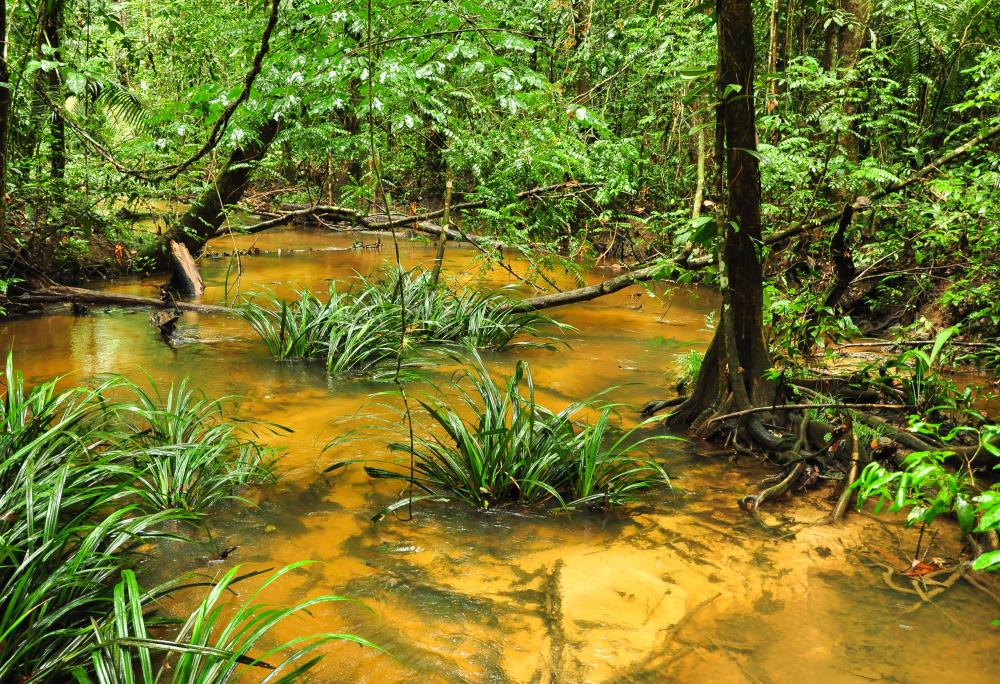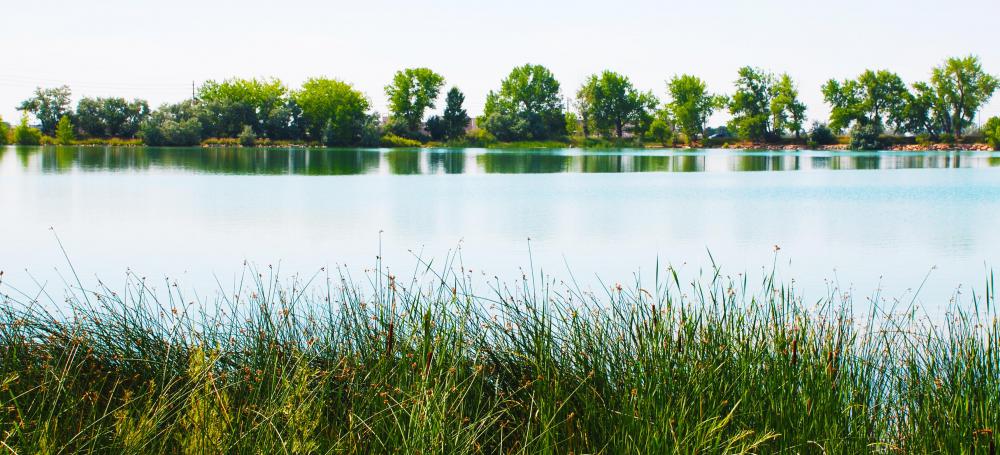At AllThingsNature, we're committed to delivering accurate, trustworthy information. Our expert-authored content is rigorously fact-checked and sourced from credible authorities. Discover how we uphold the highest standards in providing you with reliable knowledge.
What Are the Different Types of Wetland Protection?
Governmental laws and regulations are the primary sources of wetland protection. These include everything from the US Clean Water Act to programs that buy wetland from private owners to education of the public. Prior to the enactment of these types of environmental laws, many wetlands were destroyed, while even more were endangered. Regulations designed for wetland protection typically originate from federal, state, and local jurisdictions and their governing bodies.
One of the most sweeping programs that help protect wetlands came from the US government’s enactment of the Clean Water Act. In total, this legislation is designed to protect all bodies of water within the US, but it also contains rulings that specifically apply to wetlands. One of the most important aspects of the Clean Water Act as it pertains to wetlands are regulations to ensure that tributaries emptying into these areas must be examined based on what impact they could have on the receiving bodies of water. In some cases, acceptable levels of pollution for a creek or stream at their point of origination could ultimately be devastating to a wetland ecosystem. This type of “big picture” legislation helps protect marshes and wetlands from incoming pollution.

Another type of government-sponsored wetland protection comes from incentives offered to landowners to either donate or sell their wetlands to governments or private environmental programs. Once a part of these programs, the use and ecosystems of the wetlands can be more closely monitored. In addition to any monetary gain from the direct sale of a wetland to a protective agency, landowners are often offered attractive tax deductions. Another type of incentive involves designating a private owner of wetlands as a government steward of its own property. By working with government agencies to ensure protection of its wetlands, the landowner may be eligible for government grants to help protect and enhance the property, while still retaining ownership.

In many cases, wetlands that are sold to government or private environmental agencies become protected areas. They may become part of a federal or state park system, a wildlife refuge, or a wilderness area. The ecosystems of these protected wetlands are usually monitored carefully, and their use is typically restricted.
As well as federal programs and legislation, some states and local jurisdictions have laws and regulations designed for local wetland protection. They are more common in coastal areas where wetlands are abundant. This type of wetland protection is often designed to protect wetlands that may have concerns specific to their geographic area, and that may not be covered by broader federal regulations.

Educating both the public and enforcement personnel is another way in which many governments strive to achieve wetland protection. This sometimes involves community outreach programs and educational resources for teachers and other educators. For the most part, these programs are designed to help community members understand the role of wetlands and the importance of maintaining their ecosystems.
Frequently Asked Questions
What are the primary types of wetland protection?
Wetland protection primarily falls into regulatory protections, such as the Clean Water Act in the United States, which regulates the discharge of pollutants and the filling of wetlands. Non-regulatory protections include land acquisition, where land trusts or governments purchase wetlands to preserve them, and voluntary restoration or conservation efforts by landowners and organizations.
How does the Clean Water Act protect wetlands?
The Clean Water Act protects wetlands by requiring permits for any discharge of dredged or fill material into waters of the United States, which includes wetlands. According to the Environmental Protection Agency, this act has been instrumental in reducing wetland loss by an average of 80% compared to pre-act levels.
What role do non-governmental organizations play in wetland protection?
Non-governmental organizations (NGOs) play a crucial role in wetland protection by engaging in direct land conservation, advocacy, education, and research. Organizations like the Ramsar Convention work internationally to designate and protect wetlands of significant importance, while local NGOs often focus on protecting and restoring wetlands within their regions.
Can private landowners contribute to wetland protection?
Yes, private landowners can significantly contribute to wetland protection through conservation easements, which are voluntary legal agreements that limit future land use to preserve conservation values. Additionally, landowners can engage in stewardship practices that enhance wetland health and participate in wetland restoration projects.
What is the significance of wetland mitigation banking?
Wetland mitigation banking is a system that allows developers to compensate for the impact of their activities on wetlands by purchasing credits from a wetland bank, where wetlands have been restored or created. This system, regulated by the U.S. Army Corps of Engineers and the Environmental Protection Agency, ensures that for every acre of wetland impacted, there is a corresponding acre conserved or restored.
How does international cooperation contribute to wetland protection?
International cooperation is vital for wetland protection, as many wetland ecosystems extend beyond national borders. The Ramsar Convention, an international treaty signed in 1971, provides a framework for the conservation and wise use of wetlands and their resources. It has been ratified by over 170 countries, which commit to maintaining the ecological character of their Ramsar-listed wetlands.
AS FEATURED ON:
AS FEATURED ON:













Discuss this Article
Post your comments